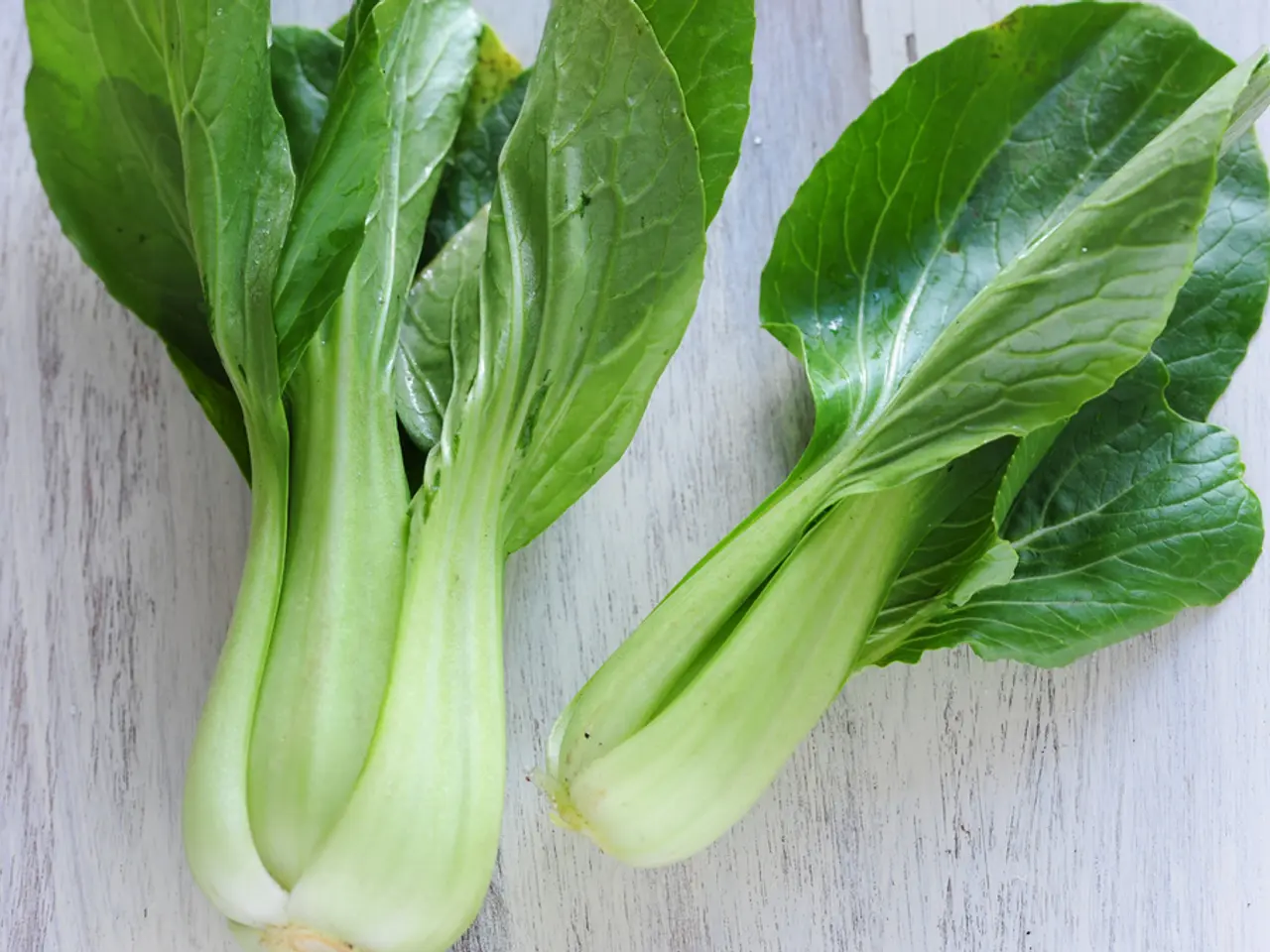Rapidly Expanding Vegetable Garden Crops: Top 5 Intercrops to Boost Yield
=====================================================================
In the world of home gardening, maximising space and productivity is key. One effective method to achieve this is through intercropping, a technique that involves planting fast-growing vegetables alongside slower-growing ones. Here's a guide to some fast-growing vegetables suitable for intercropping and their planting tips.
Key Fast-Growing Vegetables for Intercropping and Their Tips
- Radishes
- Mature in 3–4 weeks.
- Prefer loose, well-drained soil about 20 cm deep.
- Avoid high nitrogen to prevent excessive leaf growth over roots.
- Sow seeds 5 cm apart, thin seedlings to prevent crowding.
- Ideal for intercropping as they do not take much space and mature fast, allowing room for slower crops like carrots to grow later.
- Lettuce and Other Leafy Greens
- Grow quickly and tolerate shade from taller crops.
- Use transplants for faster establishment or direct seed for continuous harvest.
- Keep soil moist and rich in organic matter. Thin plants to avoid overcrowding.
- Green Onions and Spinach
- Shallow-rooted, suitable for mixed planting with deep-rooted crops.
- Spinach prefers cooler seasons and nutrient-rich soil, harvested for baby leaves or mature leaves.
- Beans and Peas
- Direct sow seeds; mature moderately fast.
- Beans fix nitrogen, improving soil for companion plants.
- Can be paired with taller plants like corn or used as ground cover to reduce weed growth.
Planting Tips for Intercropping Fast-Growing Vegetables
- Combine plants with different growth habits (height, root depth, nutrient needs). For example, tall crops like corn or tomatoes with short, fast-maturing crops like radishes or lettuce beneath.
- Use direct seeding for fast growers (radishes, beans, peas) and transplants for plants like lettuce to maximise growing time.
- Keep soil loose and fertile by adding compost regularly to replenish nutrients between crops, especially when practising succession planting or intensive intercropping.
- Water evenly and protect young plants from pests with nets or row covers as needed.
- Thin seedlings soon after emergence to prevent competition and promote healthy growth.
- Plan garden layout to allow harvesting fast growers before slower crops need space, enabling continuous yield from the same area.
Planting Instructions
- Green Onions or Scallions: Can be started inside or sown directly into the garden, 1⁄4 inch apart and 1⁄4 inch deep in fertile, well-draining soil in the spring. If planting from seed, sow them 4 inches apart and gently press them into the soil.
- Leafy Greens (Lettuce, Arugula, Spinach): Plant in an area with full morning sun followed by some dappled shade, in soil that is well-draining and fertile. Use transplants for faster establishment or direct seed for continuous harvest.
- Beets: Plant seeds directly into the garden, 1⁄2 inch deep and 1-2 inches apart. Beets tolerate low-fertility soils but thrive when the soil is amended with plenty of organic matter and is well-draining.
- Spring Onions (Plant Sets): Plant 6-8 weeks prior to the last frost, 4-6 inches apart and 2 inches deep. Spring onions soil should be well-draining, rich in organic material, and slightly acidic to neutral.
By following these guidelines, home gardeners can create a bountiful, space-efficient garden using fast-growing vegetables suitable for intercropping and succession planting. Happy gardening!
[1] Gardening Know How. (2021). Intercropping: The Ultimate Guide for Home Gardeners. [online] Available at: https://www.gardeningknowhow.com/garden-how-to/vegetables/intercropping-vegetables.htm
[2] The Spruce. (2021). Intercropping: The Ultimate Guide for Home Gardeners. [online] Available at: https://www.thespruce.com/intercropping-vegetables-1807707
[3] The Old Farmer's Almanac. (2021). Intercropping: The Ultimate Guide for Home Gardeners. [online] Available at: https://www.almanac.com/gardening/intercropping-vegetables
[5] The Rural Gardener. (2021). Intercropping: The Ultimate Guide for Home Gardeners. [online] Available at: https://www.theruralgardener.co.uk/intercropping-the-ultimate-guide-for-home-gardeners/
Read also:
- Experiencing Adverse Reactions to Promacta: A Guide to Coping Strategies
- Forward-thinking entrepreneurs and digital nomads, discover a treasure trove of essential resources to empower your online journey with our curated list of top 10 start-up and digital nomad tools.
- Industries Embracing Thermal Drone Technologies in the Year 2025
- Current statistics and details concerning Jean Pierre Kraemer's assets in the year 2025




